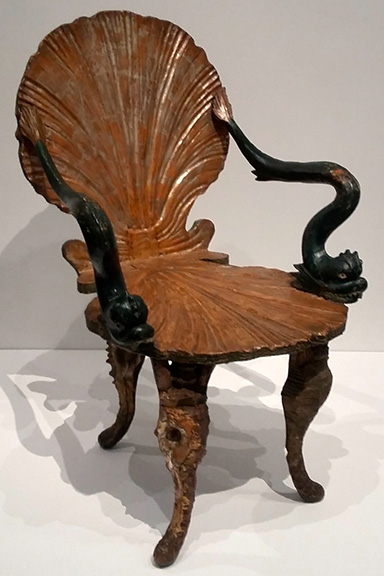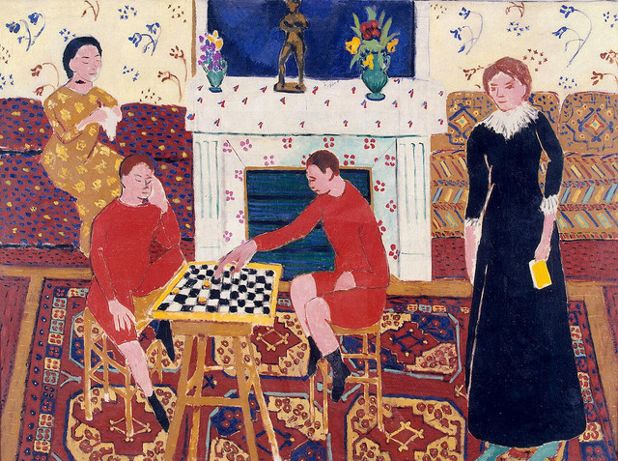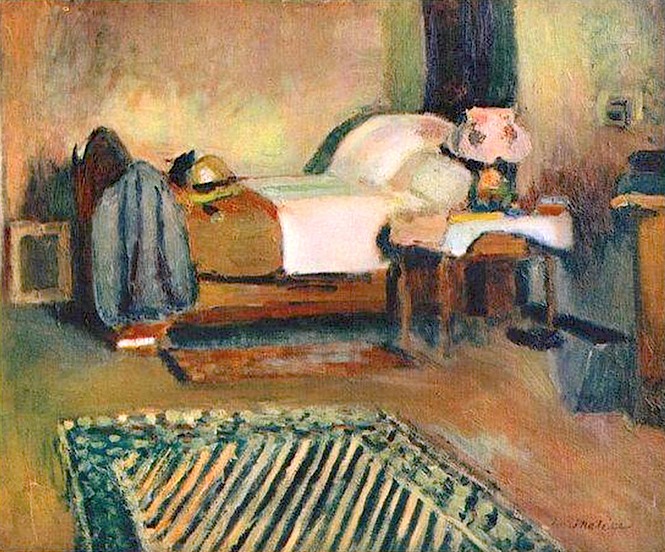“The environment creates the object. I spent my entire life working in front of the same objects that gave me a sense of reality, turning my mind to all that these objects had been through for me and with me .”
Henri Matisse
Matisse liked to be surrounded in everyday life by furniture and objects, which constantly renew his inspiration, and which may become the main subject of his paintings and drawings. Some of them are faithfull companions.For him, the object, artistic or useful, is a pretext for researches on the line, the shape and the color, in his methodic process to the ever greater simplification to find the “sign” and the brightness in his works. Furthermore,
the artist gives them a personality and considers them as actors with a singular character and a particular story that he staged in different compositions.Through objects, as in the rest of his work, Matisse was seeking the purest expression of his view of the world around him. Objects were used as part of this process, enabling the artist to explore different coloured and graphic facets, in an approach that fostered constant, vibrant change and development in his style. The objects form a repertoire of shapes and colours the painter would dip into depending on the requirements of his compositions. Matisse gives the object a crucial role to play: ” Objects are actors: good actors can perform in ten different plays, an object can perform a different role in ten different paintings.” A single object may therefore be transformed in a series of colourful, graphic variations on a same theme.

Hélène Adant, Palette d’objets, Villa Le Rêve, Vence, 1946, photography Coll. Photo library of the documentation center, Matisse museum, Nice Photo : Centre Pompidou, Paris, Mnam/Cci, Bibliothèque Kandinsky, Fund Hélène Adant
From his very first painting, Still Life with Books (1890), Matisse always saw objects as standalone subjects, to the point that they were transformed into the protagonists of art that attempted to transmit emotion:
“copies don’t interest me […] what’s important is the object’s relationship to the artist, the artist’s personality, the artist’s skill in structuring his feelings and emotions”.
The artist considered the chosen objects as loyal witnesses to a sense of curiosity, a period, a style of art, a friendship, and he displayed a great attentiveness to and interest in them. Some acted as veritable studio companions.Some objects are particularly significant, such as the Rococo chair he bought in Nice in 1942.

“I’ve been looking for a new object for months. I don’t know what… I’m looking for something to grab me. ” “I have finally found the object I’ve been looking for for a year now. It’s a Baroque Venetian chair in varnished silver. Enamel-like. […] When I saw it in an antique dealer’s a few weeks ago, I was shaken. It is spectacular, I’m obsessed with it. I shall slowly make my way back with it in the summer. ”
This Rococo chair became the primary protagonist in many paintings. Its arabesque lines bring it to life. Its harmonious pose, slightly outside the frame, turns it into a truly exceptional model.

Searching for source materials, Matisse traveled extensively and gathered works from China, Egypt, Morocco, Java, Tangiers, the Congo, Europe, and elsewhere. He had eclectic tastes and could find beauty and inspiration just as easily in a silver chocolate pot as a disproportionate statuette.

Chocolate pot. French. 19th–early 20th century. Silver and wood. Private collection.
When Henri Matisse married Amélie Noellie Parayre in January 1898 the couple received a beautiful silver chocolate pot as a wedding present from the French artist Albert Marquet. Many of Matisse’s still lifes of this period feature the silver pot.


 This version of chocolate pot was bought by Pablo Picasso
This version of chocolate pot was bought by Pablo Picasso

Vase, artist unknown, Andalusia, Spain (early 20th century), blown glass (Ancienne collection Henri Matisse, former collection of Henri Matisse, Musée Matisse, Nice. Bequest of Madame Henri Matisse, 1960. Photo by François Fernandez, image courtesy Musée Matisse / Museum of Fine Arts, Boston)
Matisse found this vase on his 1910 trip to Andalusia. No doubt the artist took pleasure in the vase’s sinuous curves, half-moon handles, and bulbous hips that bring to mind a stoutly woman. It is the central figure in his painting “Vase of Flowers” (1924).

Matisse was essentially a studio painter his entire career (except,curiously enough,for his seminal break-through during the summer of 1905 and his Morocco trips).Even in Tahiti he painted indoors.But whether indoors or just outside his home ,he made everything a studio.

I will end my short research on Matisse’s objects and his interior, with a photo that moved me .In this photo ,Henri Matisse observes a ceramic vase by Pablo Picasso and this moment is captured by Henri Cartier Bresson .And i’m thinking, how can such a small room fit so much art.. And that inspires me..

source
http://www.musee-matisse-nice.org/
www.theguardian.com
https://pro.magnumphotos.com


